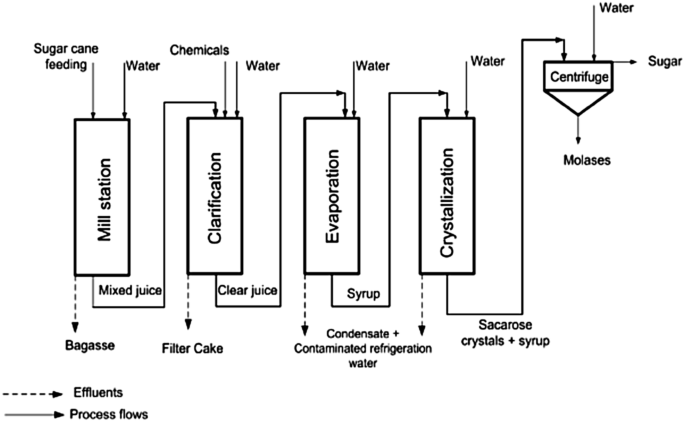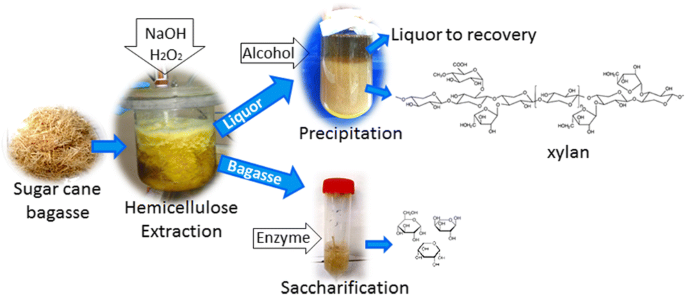Maximizar Rendimientos Y Minimizar Costos: Estrategias Avanzadas Para La Optimización Química Del Procesamiento De Azúcar De Caña
In the world of cane sugar handling, the pursuit of maximizing yields while simultaneously minimizing expenses stands as an awesome challenge that needs a critical mix of innovative chemical optimization strategies. The ins and outs of this venture explore the core of efficiency, where every aspect of the procedure plays a crucial function in attaining optimum outcomes. By checking out the ins and outs of chemical evaluation, enzyme application, pH control, filtration, and distillation approaches, a landscape rich with opportunities for enhancement and advancement arises. Among this detailed web of strategies lies the guarantee of opening untapped possibility and changing the really significance of sugar manufacturing. Cane Sugar Processing Chemicals.
Chemical Evaluation for Effectiveness
Chemical analysis plays a critical role in boosting the performance of sugar walking stick processing by providing important insights into the make-up and properties of the raw products. By carrying out comprehensive chemical analyses on sugar walking cane examples, processors can determine the exact focus of sucrose, glucose, fructose, and various other elements present in the raw product. This info is vital for maximizing the different stages of the sugar walking cane handling chain, from milling to formation.
Furthermore, chemical evaluation allows processors to determine impurities such as natural acids, healthy proteins, and minerals that can impact the top quality and yield of the last sugar product. By evaluating these impurities, cpus can implement targeted approaches to get rid of or reduce their results, eventually boosting the overall performance of the processing plant.
Furthermore, chemical evaluation helps with the surveillance of process criteria such as pH, temperature, and viscosity, permitting processors to make real-time modifications to make certain optimal conditions for sugar removal and crystallization. Overall, a thorough understanding of the chemical structure of sugar walking cane is essential for optimizing returns, minimizing expenses, and preserving high item high quality in the sugar manufacturing sector.

Enzyme Use for Increased Returns
With a strategic technique to enzyme utilization, sugar walking stick processors can significantly improve their returns while maintaining operational performance in the production process. Enzymes play a critical role in sugar walking stick processing by breaking down intricate carbohydrates into easier sugars, hence increasing the general sugar removal performance. By incorporating details enzymes customized to target the various components of sugar walking stick, such as cellulose and hemicellulose, cpus can enhance the launch of sugars throughout removal.
Enzyme utilization provides the benefit of making the most of sugar yields from the raw material while minimizing the power and sources required for processing. This results in a more sustainable and cost-efficient production process. Additionally, enzymes can navigate here aid in decreasing processing time and improving the general top quality of the sugar item. Via mindful selection and application of enzymes, sugar cane processors can optimize their procedures to achieve greater returns and profitability.
Ph Control for Optimal Handling
Enzyme application for enhanced yields in sugar cane handling lays the structure for attending to the vital element of pH control for optimal handling effectiveness. Preserving the appropriate pH level throughout various phases of sugar walking stick processing is essential for maximizing returns and lessening costs. pH control is specifically vital during the extraction and explanation procedures. In the extraction stage, maintaining the correct pH assists in achieving reliable sucrose extraction from the cane. Managing the pH during explanation aids in the rainfall of pollutants and non-sucrose components, causing a purer end product. Furthermore, pH affects the you could try here activity of enzymes entailed in the break down of macromolecules, influencing the general performance of the process. By thoroughly checking and changing the pH levels at various processing steps, sugar walking cane processors can improve sugar recuperation prices, reduce chemical use, and optimize the general manufacturing procedure. Effective pH control not just boosts the quality of the end product however additionally adds to sustainable and cost-efficient sugar cane processing procedures.
Advanced Filtering Strategies
Applying advanced purification strategies in sugar walking cane handling improves the performance and pureness of the last product through fine-tuned separation methods. By incorporating sophisticated purification modern technologies, such as membrane layer purification and triggered carbon filtering, sugar walking stick handling plants can attain greater levels of sugar recovery and improved quality assurance.

Triggered carbon purification is one more sophisticated technique that aids in the elimination of colorants, off-flavors, and recurring pollutants from sugar walking stick items. By using triggered carbon's adsorption residential properties, this filtering method enhances the quality and taste of the sugar, meeting the high criteria required by consumers and sector laws.
Energy-Efficient Purification Techniques
Energy-efficient purification techniques are essential for enhancing the sugar cane handling industry's energy intake while preserving high-grade item requirements. Typical distillation procedures can be energy-intensive, resulting in greater manufacturing expenses and ecological impacts (Cane Sugar Processing Chemicals). Carrying out energy-efficient purification methods, such as vacuum purification or molecular distillation, can substantially lower energy demands while boosting overall process performance
Vacuum purification includes lowering the pressure within the purification system, which decreases the boiling factor of the liquid mix being refined. This decrease in boiling point decreases the power needed for vaporization, resulting in energy savings compared to conventional distillation methods.
On the various other hand, molecular purification makes use of brief course purification strategies under high vacuum cleaner conditions to separate substances based on their molecular weight. This method is particularly efficient for heat-sensitive compounds, as it runs at lower temperature levels, lowering energy consumption and preserving product quality.
Conclusion
